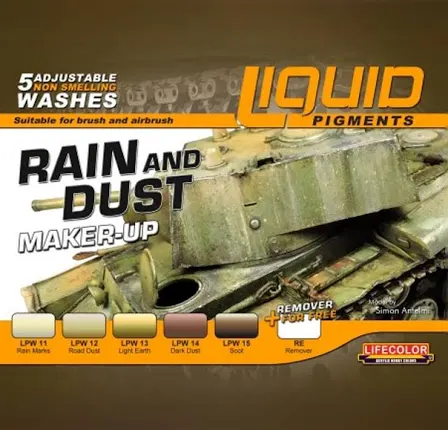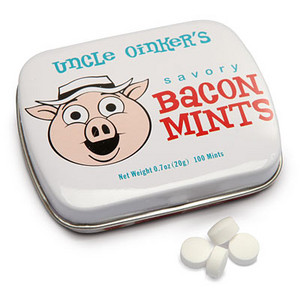Can someone please explain exactly what the Liquid Pigment product actually is?

Is this just pigments mixed with a fixer?
Thank you
Can someone please explain exactly what the Liquid Pigment product actually is?

Is this just pigments mixed with a fixer?
Thank you
Probably premixed pigments ![]()
“reversible” rules out acrylic. Must be powdered pigment in a carrier like water or alcohol.
You could certainly make your own if you were so inclined.
Thank you, Ryan & Venelin.
LOL! @barnslayer ![]()
![]()
![]()
I’ve mixed ground pastel chalk with lighter fluid since like the 1980’s etc. Likewise, home mixed LF with dry pigments.
Looking to learn what’s unique or beneficial (if any thing) about the new liquid pigment ![]() product.
product.

What are they? Another way to separate you from your hard earned money. None of these products are anyhting you can’t make yourself. Yet I’m always amazed at seeing them listed in magazine builds as if they are some sort of ingredient critical to the success of the buld.
I used to inadvertantly make filters decades ago - every time I dipped my brush in a solution to clean it.
Yup - none of it is magic - it’s just easier to pop open a fancy bottle rather than going to the effort of mixing your own. I prefer Old Skool for most of my weathering…
I am curious about products like this.
My attempts to paint and finish models always end in some degree of failure. I have never successfully used pigments. I simply do not have the know how many of you possess. If a product like this will get me closer to a decent outcome, I will use it. It may be possible to home brew but I have no idea how to do it, how to get a consistent result, what colors to use, what pigments to use, and so forth.
I have purchased numerous books on finishing models. I have watched many dozens of videos on the matter. As a body, the information is confusing, difficult to follow, often contradictory, and usually incomplete. It is so voluminous I cannot hold it all in the memory banks. Progress is hard won and I will take what help I can get.
On the flip side, I am always wary of products like this one. I have purchased numerous items promising instant success. They never deliver. Will it play nicely with the paints I use? The primer? The clear coat? Is it high quality or will it quickly deteriorate? Does it require a fine arts degree to use properly?
The ‘adjustable’ feature worries me. I tend to ‘adjust’ that sort of dial right to ‘screw up’. ![]()
Also, videos like those make me crazy. The person is obviously very skilled and working at a high level. When I try to do the same thing, the result is always bad.
I would liken things like this to shooting, riding a horse, or making a hook shot. If you do it often enough it becomes second nature and there’s little thought that actually goes into it. But I don’t, because those things actually do require skill.
True, the guy who does well with pigments may have perfected his craft down to an “art”, but I don’t necessarily know if it takes skill.
As an example, IPMS (Austin?) held a contest at Camp Mabry several years ago, I think sometime between 2003 and 2007, although I could be wrong on the dates.
Some guest dude came to do a demonstration on how to use pigments. In my memory it was something like a Marder III that he used, as it had fairly largish road wheels, and was of course a WWII German subject. He turned the model on its side, sprinkled pigment on all of the wheels, letting it clump in places, then touched a brush loaded with mineral spirits to the rim of each wheel. Capillary action caused the pigment to suck up the mineral spirits. He then knocked the model on the table a time or two to shake off some of the excess pigment. Then he turned the model over and repeated the process on the other side. In about a minute he was done. Was it skill? Art? A reflex action like loading candy into a Pez dispenser? I don’t know, but the results looked great. To me anyway. I’ve never actually seen a Marder III with mud caked onto the road wheels. But it looked right. Just like none of us have seen a muzzle brake covered in soot, but some folks sure have us convinced that’s how it would look if it ever was a thing. We buy into other modelers’ idea of what looks right, whether it does or not, and then want whatever it is they used to achieve that look.
I’m no different. When I began weathering model railroad cars in the mid 70’s, I bought into the whole chipping, scratching, and pigment thing. Except that I had tracks less than half a mile from my house and I could actually copy things I saw for myself.
The person in those videos uses the product in many ways–airbrush mottling, pin wash, splatter, streaking, wash, and wet blending. He consistently blends and layers the colors in pleasing ways. It does not look realistic, but it definitely looks well done.
I have tried the exact same techniques using other products. My brushes look the same. I apply paint in the same ways, including the parts involving an airbrush. My models turn out far inferior.
Call it what you want–he has figured out stuff I still struggle to understand.
Do quick builds on inexpensive models or old models you’re not happy with.
Use these to experiment painting technique.
I also recommend this guy on YouTube.
Some find his work overdone but you can still use his techniques.
That has been my modus operandi since returning to model building. I have watched many of Night Shift’s videos and read most of Vallejo’s painting tutorials, amongst other things. For me, learning to paint and finish models well continues to be a slow and very painful process. That just is what it is.
…
Vallejo sells a series of washes with long work time that seem very similar to these Life Color liquid pigments. I wonder if they are the same thing.
It is unclear in those videos if the working surface is gloss, semi-gloss, or flat.
According to Scale Hobbiest, Life Color paints are water based acrylics, which is good, but very temperamental, which is super bad.
Will the solvent that lifts up Life Color liquid pigments also lift Badger primer and/or Vallejo paint?
Are dried liquid pigments sealed after application?
What is the working time of liquid pigments?
I need to purchase some of this stuff, or something similar, and experiment. ![]()
Had a few spare minutes and watched the LifeColor videos. Pity the video looks like it was shot on VHS tape in the 1980’s or 360p, those guys need to get a better camera to show case their products.
Looks like another pre-bottled wash, not convinced there’s anything special about it.
Hmmm - sounds like a definition of kids’ powder paint, except the “acrylic” tag confuses - acrylic paint forms a quasi-plastic waterproof skin…so the only way it’s “adjustable” is to overlay it with another acrylic wash…which means this product advances the science of pigments all the way to the late 1960’s ![]()
I did a search for ‘liquid pigments’ and discovered this is a big thing for cosmetics. There is much to read on the subject.
HobbyLinc in the United States has these sets at a reasonable price.
I thought washes are for panel lines and crevices–just mix some paint with solvent and go. In the linked video, the modeler uses the product to create all sorts of stains, streaks, and tints. I’m confused.
Most of the difference seems to be the marketing of the the same thing with varied amounts of thinner/medium - j/k
Wash, filters, glaze and now liquid pigments etc the terms probably all mean something specific in artist speak.
Seems to me, it’s all basically varying ratios of paint or pigment + thinner/carrier.
In Wade’s World roughly:
Filter = 20 to 30 drops of thinner 1 drop of paint. Basically a very weak wash can be applied by brush or airbrush.
Wash = 2 to 8 drops of thinner 1 drop of paint. Often tidy up by wiping with lint free swab or cloth as excess is wiped away.
Everything else is somewhere in the middle. Washes of different intensity. They can all go wherever one likes in the process of making details pop out and weathering.
That’s probably wrong by art school guidelines etc and hobby product marketing etc.
For streaking this seems like it would be useful…saw Mig or someone had a version etc
…other using the ole 0/3 or 0/10 brush over and over can also do that etc.
Ah, Pez! Been there, done that, got the bad teeth…
Night Shift used VMS semi-gloss as a base before weathering. Lately though I think he’s using flat but that could have been an experiment. He seemed to have become bored with how time consuming his earlier techniques could be.
Powders require something to attach to so dry pigments need matte.
Liquid pigments may very depending on the carrier. He’s used oils, acrylics etc for washes.
IIRC in many of his videos he’s said he does not use dry pigments at all.
Okay. Thank you. That explains some of my failures. Somehow, in all my reading and watching, that information never made it into the memory banks. (My memory is very bad.)
Thank you! Over the last 5 months, before applying washes, I have experimented with gloss, semi-gloss, and matte finishes. Oil washes on a gloss finish produced the best results. My experiments with acrylic washes did not go particularly well; probably because I mix them incorrectly. All my experiments with dry pigments were done on matte surfaces.
I am going to order the second LifeColor set and give it a try. Maybe the Panzer IV E I built for the Unfinished Business campaign can be salvaged.